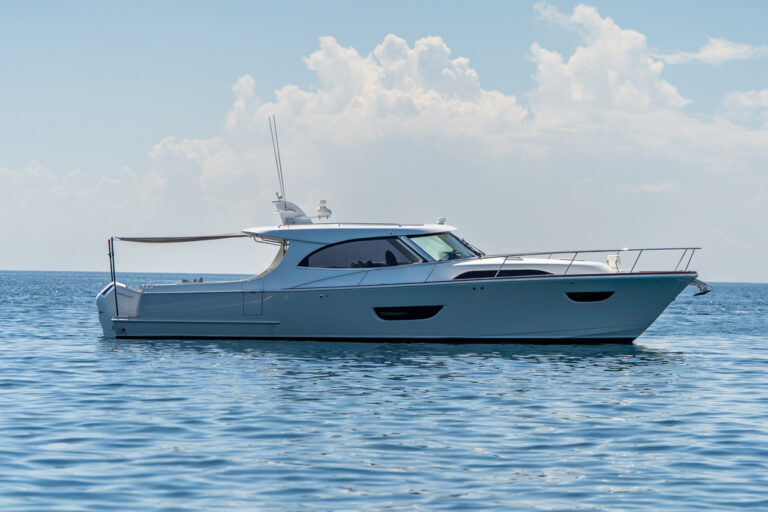
New Electronics April 2012
VHF with GPS Inside
As many as nine out of 10 VHF radios are not connected to GPS, so they cannot send a distress signal to the Coast Guard with the boat’s position, using the red panic button. The boating majority seems to have been reluctant to connect wires or hire a technician. At the same time, radio manufacturers were unwilling to incorporate a GPS receiver within a fixed-mount radio because of potential interference between GPS and VHF signals, and concerns that the GPS would not be reliable. Standard Horizon’s new Explorer GX1700 GPS radio ($230) is the first to overcome these hurdles. Standard Horizon’s engineers used filters to eliminate interference and installed a sensitive 12-channel GPS into the front panel of the radio (and made it possible to connect an external GPS antenna). Skippers also can program up to 100 waypoints into the GX1700, which has a small compass display with readouts for vessel speed, course, bearing and distance to go. _Standard Horizon, 714-827-7600; www.standardhorizon.com
_

4G Goes the Distance
Navico’s Broadband Radar employs frequency-modulated continuous-wave technology in place of a magnetron. Instead of shouting loudly and listening for the echo, Navico’s device emits a series of whispers in constantly changing frequencies, while continuously listening. The result was no “main bang” interference cluttering the center of the display. Unlike conventional radars, broadband paints targets within feet of the vessel, but the first iteration barely had a 24-mile range. Navico’s new Broadband 4G version (available for Simrad, Lowrance and B&G multifunction displays for about $2,000) represents mature technology. Like the original, 4G transmits at a third less power and emits less radiation than a cell phone, but it now has a 36-mile range and dual-range abilities. Beam-sharpening technology allows the 4G’s 18-inch dome to achieve horizontal resolution similar to that of a 3½-foot open array. www.lowrance.com; www.simrad-yachting.com; www.bandg.com

Shout Heard ‘Round the World
The Shout Nano is a new handheld satellite tracker/communicator based on the Iridium 9602 modem ($1,025 to $1,500 from dealers, plus service plan). Yachtsmen anywhere in the world may send canned messages or free text messages using the Shout Nano’s on-screen keyboard, in both cases tagged with latitude and longitude. The device will also send one-touch emergency notifications, and because it is a two-way communicator, the monitoring center can confirm that it has received your distress signal and dispatched the nearest search-and-rescue teams. Shout Nano can be programmed to awaken on a schedule and send position reports, with battery life sufficient to send a position report every hour for up to two months. NAL Research; www.shoutnano.com








